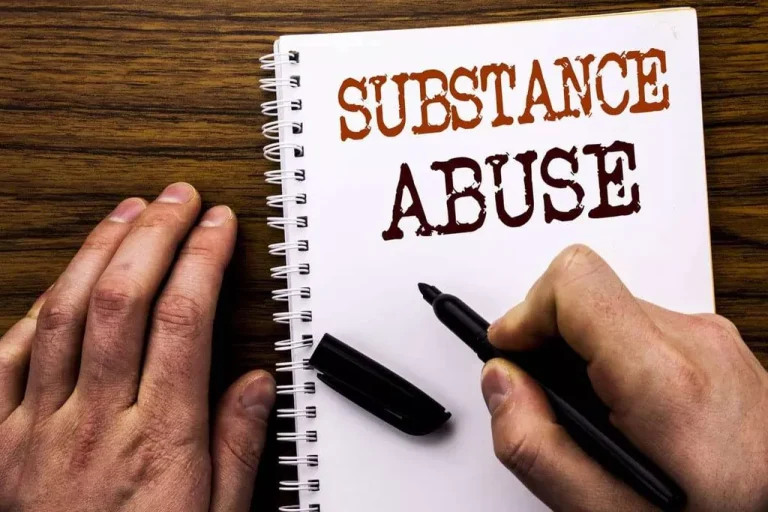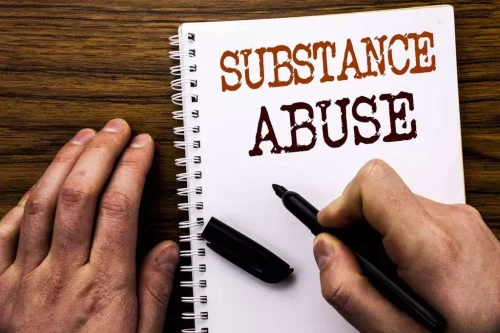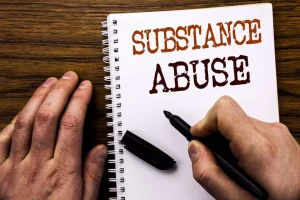Expanding the continuum of substance use disorder treatment: Nonabstinence approaches PMC

In addition to the primary outcome variables of the COMBINE study, post hoc analysis of drinks per drinking day revealed that patients with a goal of controlled drinking reported fewer drinks per drinking day while those oriented towards complete abstinence as a goal reported greater drinks per drinking day. These findings were conceptualized in the context of the abstinence violation effect, whereby an initial lapse triggers heavier within-episode drinking among abstinence-oriented individuals (Marlatt & Gordon, 1985). Perhaps the most notable gap identified by this review is the dearth of research empirically evaluating the effectiveness of nonabstinence approaches for DUD treatment. Given low treatment engagement and high rates of health-related harms among individuals who use drugs, combined with evidence of nonabstinence goals among a substantial portion of treatment-seekers, testing nonabstinence treatment for drug use is a clear next step for the field. Ultimately, nonabstinence treatments may overlap significantly with abstinence-focused treatment models. Harm reduction psychotherapies, for example, incorporate multiple modalities that have been most extensively studied as abstinence-focused SUD treatments (e.g., cognitive-behavioral therapy; mindfulness).
4 Stepwise regressions: Quality of life (QOL)
The Rand study quantified the relationship between severity of alcohol dependence and controlled-drinking outcomes, although, overall, the Rand population was a severely alcoholic one in which “virtually all subjects reported symptoms of alcohol dependence” (Polich, Armor, and Braiker, 1981). Edwards et al. (1983) reported that controlled drinking is more unstable than abstinence for alcoholics over time, but recent studies have found that controlled drinking increases over longer follow-up periods. Finney and Moos (1991) reported a 17 percent “social or moderate drinking” rate at 6 years and a 24 percent rate at 10 years. In studies by McCabe (1986) and Nordström and Berglund (1987), CD outcomes exceeded abstinence during follow-up of patients 15 and more years after treatment.
1. Nonabstinence treatment effectiveness

Furthermore, noprior study has considered length of time in recovery when comparing QOL betweenabstinent and non-abstinent individuals. The current aims are to identify correlates ofnon-abstinent recovery and examine differences in QOL between abstainers andnon-abstainers accounting for length of time in recovery. In addition to issues with administrative discharge, abstinence-only treatment may contribute to high rates of individuals not completing SUD treatment. About 26% of all U.S. treatment episodes end by individuals leaving the treatment program prior to treatment completion (SAMHSA, 2019b). Studies which have interviewed participants and staff of SUD treatment centers have cited ambivalence about abstinence as among the top reasons for premature treatment termination (Ball, Carroll, Canning-Ball, & Rounsaville, 2006; Palmer, Murphy, Piselli, & Ball, 2009; Wagner, Acier, & Dietlin, 2018). One study found that among those who did not complete an abstinence-based (12-Step) SUD treatment program, ongoing/relapse to substance use was the most frequently-endorsed reason for leaving treatment early (Laudet, Stanick, & Sands, 2009).
4. Consequences of abstinence-only treatment
Further, results from this study suggest that drinking goal may be useful in selecting a treatment approach. In particular, medically oriented treatments emphasizing abstinence appear to be an effective and cost efficient treatment modality for patients whose goals are oriented toward complete abstinence. Conversely, more intensive behavioral interventions may be particularly beneficial for patients whose goals are conditional abstinence or controlled drinking. On balance, this study is one of the few to empirically examine the effect of drinking goal on treatment outcome, and in particular, matching treatment options to drinking goals. If supported in future studies, these results could be used to inform treatment planning for patients with alcoholism. To that end, an important feature of this study is the accessibility and clinical appeal of the drinking goal measure, which can be readily applied to a wide variety of treatment settings.

Hyman (1976) earlier found a similar emergence of controlled drinking over 15 years. The position of ALCOHOLICS ANONYMOUS (AA) and the dominant view among therapists who treat alcoholism in the United States is that the goal of treatment for those who have been dependent on alcohol is total, complete, and permanent abstinence from alcohol (and, often, other intoxicating substances). By extension, for all those treated for alcohol abuse, including those with no dependence symptoms, moderation of drinking (termed controlled drinking or CD) as a goal of treatment is rejected controlled drinking vs abstinence (Peele, 1992). Instead, providers claim, holding out such a goal to an alcoholic is detrimental, fostering a continuation of denial and delaying the alcoholic’s need to accept the reality that he or she can never drink in moderation. The results suggest that the 12-step philosophy, with abstinence as the only possible choice, might mean that people in the AA community who are ambivalent and/or critical regarding parts of the philosophy must “hide” their perceptions on their own process.
- If you or a loved one is struggling with drug or alcohol misuse, it may be time to seek help.
- Ours is a “no excuses” program, we are responsible for our decisions and behaviors; we have a choice.
- While patients with goals of complete abstinence did succeed in drinking less frequently and taking longer to relapse to heavy drinking than participants with controlled drinking or conditional abstinence goals, they drank more per drinking day, on average.
- Alcoholism is characterised by a loss of control over one’s drinking behaviour and an inability to consistently limit consumption.
You might find yourself constantly preoccupied with thoughts about when you’ll have your next drink or whether you’re staying within your limits – this constant monitoring can create stress and mental exhaustion over time. Moreover, in committing to a moderate drinking plan, it’s essential to recognise that slip-ups can happen and these instances should not discourage you from continuing on your path towards moderation management, but rather serve as reminders of why moderation is necessary in the first place. Polich, Armor, and Braiker found that the most severely dependent alcoholics (11 or more dependence symptoms on admission) were the least likely to achieve nonproblem drinking at 4 years.

To be honest, people make no secret of the fact that moderation management is not the only way to take moderation into account. As it may seem as if it is somewhat of a strange expression, some believe alcoholics and people who abuse substances can be tolerable (temperance) yet still consume alcoholic beverages or use drugs every so often. This hypothesis suggests that it may prove advantageous for those substance abusers who do not consume a lot of prescription or alcoholic beverages and who do not often experience negative effects as a consequence of their substance misuse practices. Not all addictions can be treated with abstinence, and it is not always possible or healthy to avoid certain behaviors for the long term. Sometimes, “abstinence-based treatment” is used to refer to “drug free” treatment, with the ultimate goal of transitioning a person with substance misuse issues to stop using any drug.
- The RP model has been studied among individuals with both AUD and DUD (especially Cocaine Use Disorder, e.g., Carroll, Rounsaville, & Gawin, 1991); with the largest effect sizes identified in the treatment of AUD (Irvin, Bowers, Dunn, & Wang, 1999).
- This moderation management strategy involves avoiding medication and alcohol abuse.
- It involves the use of medications like naltrexone which help reduce alcohol cravings.
- Its system of free support groups, a 12-step program, and confessional meetings over the smell of percolating coffee as members sit in a circle is part of the popular culture, giving birth to other legitimate groups such as Narcotics Anonymous and silly parodies such as Chocoholics Anonymous.
- Individual responsibility is a major piece of MM, similarly all things considered with AA.
- The current review highlights a notable gap in research empirically evaluating the effectiveness of nonabstinence approaches for DUD treatment.

Goodwin, Crane, & Guze (1971) found that controlled-drinking remission was four times as frequent as abstinence after eight years for untreated alcoholic felons who had “unequivocal histories of alcoholism”. But 61 percent of those who achieved remission without treatment continued drinking. By the same token, controlled drinking may be the more common outcome for untreated remission, since many alcohol abusers may reject treatment because they are unwilling to abstain.
Alcoholism: Abstinence Versus Controlled Drinking
Those in moderation management recovery from alcoholism are individuals who have encountered difficulties with alcohol but have learned how to begin again, in addition to recovering their constitutional right to abstain from alcohol – as outlined in The Big Book. We encourage our members to be aware when drinking, using drugs or feeling upset with themselves. Knowing what happened https://ecosoberhouse.com/ can prove helpful later in the moderation management program. After two or three drinks, problem drinkers may feel great, which encourages them to drink more.
Abstinence vs. Moderation
Our approach is not one-size-fits-all; instead, it’s grounded in empathy, respect for your individuality, and a deep understanding of how alcohol misuse impacts different people in different ways. That’s why our approach involves taking time to know you better, identify your triggers, and help chart a path forward that aligns with your life goals. When it comes to choosing between total abstinence or limiting your intake, the answer isn’t black and white. Several factors influence this decision, including societal perception, cultural factors, psychological impact, and health implications. You may feel pressured by society’s view of what is acceptable drinking behaviour or fear being ostracised due to cultural norms surrounding alcohol use. Psychologically, you might be dealing with a range of emotions from guilt over past incidents to anxiety about future relapses.
